Python version: 3.8
Pytorch version: 1.9.0+cpu
Platform: Anaconda Spyder5.0
To reproduce this problem, just copy every code below to a single file.
The ILSVRC2012_val_00000293.jpg file used in this code is shown below, you also need to download it and then change its destination in the code.
- Some background of this problem:
I am now working on a project that aims to develop a hardware accelerator to complete the inference process of the MobileNet V2 network. I used pretrained quantized Pytorch model to simulate the outcome, and the result comes out very well.
In order to use hardware to complete this task, I wish to know every inputs and outputs as well as intermidiate variables during runing this piece of pytorch code. I used a package named torchextractor to fetch the outcomes of first layer, which in this case, is a 3*3 convolution layer.
import numpy as np
import torchvision
import torch
from torchvision import transforms, datasets
from PIL import Image
from torchvision import transforms
import torchextractor as tx
import math
#########################################################################################
##### Processing of input image
#########################################################################################
normalize = transforms.Normalize(mean=[0.485, 0.456, 0.406],
std=[0.229, 0.224, 0.225])
test_transform = transforms.Compose([
transforms.Resize(256),
transforms.CenterCrop(224),
transforms.ToTensor(),
normalize,])
preprocess = transforms.Compose([
transforms.Resize(256),
transforms.CenterCrop(224),
transforms.ToTensor(),
transforms.Normalize(mean=[0.485, 0.456, 0.406], std=[0.229, 0.224, 0.225]),
])
#image file destination
filename = "D:\Project_UM\MobileNet_VC709\MobileNet_pytorch\ILSVRC2012_val_00000293.jpg"
input_image = Image.open(filename)
input_tensor = preprocess(input_image)
input_batch = input_tensor.unsqueeze(0)
#########################################################################################
#########################################################################################
#########################################################################################
#----First verify that the torchextractor class should not influent the inference outcome
# ofmp of layer1 before putting into torchextractor
a,b,c = quantize_tensor(input_batch)# to quantize the input tensor and return an int8 tensor, scale and zero point
input_qa = torch.quantize_per_tensor(torch.tensor(input_batch.clone().detach()), b, c, torch.quint8)# Using quantize_per_tensor method of torch
# Load a quantized mobilenet_v2 model
model_quantized = torchvision.models.quantization.mobilenet_v2(pretrained=True, quantize=True)
model_quantized.eval()
with torch.no_grad():
output = model_quantized.features[0][0](input_qa)# Ofmp of layer1, datatype : quantized_tensor
# print("FM of layer1 before tx_extractor:\n",output.int_repr())# Ofmp of layer1, datatype : int8 tensor
output1_clone = output.int_repr().detach().numpy()# Clone ofmp of layer1, datatype : ndarray
#########################################################################################
#########################################################################################
#########################################################################################
# ofmp of layer1 after adding torchextractor
model_quantized_ex = tx.Extractor(model_quantized, ["features.0.0"])#Capture of the module inside first layer
model_output, features = model_quantized_ex(input_batch)# Forward propagation
# feature_shapes = {name: f.shape for name, f in features.items()}
# print(features['features.0.0']) # Ofmp of layer1, datatype : quantized_tensor
out1_clone = features['features.0.0'].int_repr().numpy() # Clone ofmp of layer1, datatype : ndarray
if(out1_clone.all() == output1_clone.all()):
print('Model with torchextractor attached output the same value as the original model')
else:
print('Torchextractor method influence the outcome')
Here I define a numpy quantization scheme based on the quantization scheme proposed by Quantization and Training of Neural Networks for Efficient Integer-Arithmetic-Only Inference
# Convert a normal regular tensor to a quantized tensor with scale and zero_point
def quantize_tensor(x, num_bits=8):# to quantize the input tensor and return an int8 tensor, scale and zero point
qmin = 0.
qmax = 2.**num_bits - 1.
min_val, max_val = x.min(), x.max()
scale = (max_val - min_val) / (qmax - qmin)
initial_zero_point = qmin - min_val / scale
zero_point = 0
if initial_zero_point < qmin:
zero_point = qmin
elif initial_zero_point > qmax:
zero_point = qmax
else:
zero_point = initial_zero_point
# print(zero_point)
zero_point = int(zero_point)
q_x = zero_point + x / scale
q_x.clamp_(qmin, qmax).round_()
q_x = q_x.round().byte()
return q_x, scale, zero_point
#%%
# #############################################################################################
# --------- Simulate the inference process of layer0: conv33 using numpy
# #############################################################################################
# get the input_batch quantized buffer data
input_scale = b.item()
input_zero = c
input_quantized = a[0].detach().numpy()
# get the layer0 output scale and zero_point
output_scale = model_quantized.features[0][0].state_dict()['scale'].item()
output_zero = model_quantized.features[0][0].state_dict()['zero_point'].item()
# get the quantized weight with scale and zero_point
weight_scale = model_quantized.features[0][0].state_dict()["weight"].q_scale()
weight_zero = model_quantized.features[0][0].state_dict()["weight"].q_zero_point()
weight_quantized = model_quantized.features[0][0].state_dict()["weight"].int_repr().numpy()
# print(weight_quantized)
# print(weight_quantized.shape)
# bias_quantized,bias_scale,bias_zero= quantize_tensor(model_quantized.features[0][0].state_dict()["bias"])# to quantize the input tensor and return an int8 tensor, scale and zero point
# print(bias_quantized.shape)
bias = model_quantized.features[0][0].state_dict()["bias"].detach().numpy()
# print(input_quantized)
print(type(input_scale))
print(type(output_scale))
print(type(weight_scale))
Then I write a quantized 2D convolution using numpy, hope to figure out every details in pytorch data flow during the inference.
#%% numpy simulated layer0 convolution function define
def conv_cal(input_quantized, weight_quantized, kernel_size, stride, out_i, out_j, out_k):
weight = weight_quantized[out_i]
input = np.zeros((input_quantized.shape[0], kernel_size, kernel_size))
for i in range(weight.shape[0]):
for j in range(weight.shape[1]):
for k in range(weight.shape[2]):
input[i][j][k] = input_quantized[i][stride*out_j+j][stride*out_k+k]
# print(np.dot(weight,input))
# print(input,"\n")
# print(weight)
return np.multiply(weight,input).sum()
def QuantizedConv2D(input_scale, input_zero, input_quantized, output_scale, output_zero, weight_scale, weight_zero, weight_quantized, bias, kernel_size, stride, padding, ofm_size):
output = np.zeros((weight_quantized.shape[0],ofm_size,ofm_size))
input_quantized_padding = np.full((input_quantized.shape[0],input_quantized.shape[1]+2*padding,input_quantized.shape[2]+2*padding),0)
zero_temp = np.full(input_quantized.shape,input_zero)
input_quantized = input_quantized - zero_temp
for i in range(input_quantized.shape[0]):
for j in range(padding,padding + input_quantized.shape[1]):
for k in range(padding,padding + input_quantized.shape[2]):
input_quantized_padding[i][j][k] = input_quantized[i][j-padding][k-padding]
zero_temp = np.full(weight_quantized.shape, weight_zero)
weight_quantized = weight_quantized - zero_temp
for i in range(output.shape[0]):
for j in range(output.shape[1]):
for k in range(output.shape[2]):
# output[i][j][k] = (weight_scale*input_scale)*conv_cal(input_quantized_padding, weight_quantized, kernel_size, stride, i, j, k) + bias[i] #floating_output
output[i][j][k] = weight_scale*input_scale/output_scale*conv_cal(input_quantized_padding, weight_quantized, kernel_size, stride, i, j, k) + bias[i]/output_scale + output_zero
output[i][j][k] = round(output[i][j][k])
# int_output
return output
Here I input the same image, weight, and bias together with their zero_point and scale, then compare this "numpy simulated" result to the PyTorch calculated one.
quantized_model_out1_int8 = np.squeeze(features['features.0.0'].int_repr().numpy())
print(quantized_model_out1_int8.shape)
print(quantized_model_out1_int8)
out1_np = QuantizedConv2D(input_scale, input_zero, input_quantized, output_scale, output_zero, weight_scale, weight_zero, weight_quantized, bias, 3, 2, 1, 112)
np.save("out1_np.npy",out1_np)
for i in range(quantized_model_out1_int8.shape[0]):
for j in range(quantized_model_out1_int8.shape[1]):
for k in range(quantized_model_out1_int8.shape[2]):
if(out1_np[i][j][k] < 0):
out1_np[i][j][k] = 0
print(out1_np)
flag = np.zeros(quantized_model_out1_int8.shape)
for i in range(quantized_model_out1_int8.shape[0]):
for j in range(quantized_model_out1_int8.shape[1]):
for k in range(quantized_model_out1_int8.shape[2]):
if(quantized_model_out1_int8[i][j][k] == out1_np[i][j][k]):
flag[i][j][k] = 1
out1_np[i][j][k] = 0
quantized_model_out1_int8[i][j][k] = 0
# Compare the simulated result to extractor fetched result, gain the total hit rate
print(flag.sum()/(112*112*32)*100,'%')
If the "numpy simulated" results are the same as the extracted one, call it a hit. Print the total hit rate, it shows that numpy gets 92% of the values right. Now the problem is, I have no idea why the rest 8% of values come out wrong.
Comparison of two outcomes: The picture below shows the different values between Numpy one and PyTorch one, the sample channel is index
[1]. The left upper corner is Numpy one, and the upright corner is PyTorch one, I have set all values that are the same between them to 0, as you can see, most of the values just have a difference of 1(This can be view as the error brought by the precision loss of fixed point arithmetics), but some have large differences, e.g. the value[1][4], 121 vs. 76 (I don't know why)
Focus on one strange value: This code is used to replay the calculation process of the value
[1][4], originally I was expecting a trial and error process could lead me to solve this problem, to get my wanted number of 76, but no matter how I tried, it didn't output 76. If you want to try this, I paste this code for your convenience.
#%% A test code to check the calculation process
weight_quantized_sample = weight_quantized[2]
M_t = input_scale * weight_scale / output_scale
ifmap_t = np.int32(input_quantized[:,1:4,7:10])
weight_t = np.int32(weight_quantized_sample)
bias_t = bias[2]
bias_q = bias_t/output_scale
res_t = 0
for ch in range(3):
ifmap_offset = ifmap_t[ch]-np.int32(input_zero)
weight_offset = weight_t[ch]-np.int32(weight_zero)
res_ch = np.multiply(ifmap_offset, weight_offset)
res_ch = res_ch.sum()
res_t = res_t + res_ch
res_mul = M_t*res_t
# for n in range(1, 30):
# res_mul = multiply(n, M_t, res_t)
res_t = round(res_mul + output_zero + bias_q)
print(res_t)
Could you help me out of this, have been stuck here for a long time.



